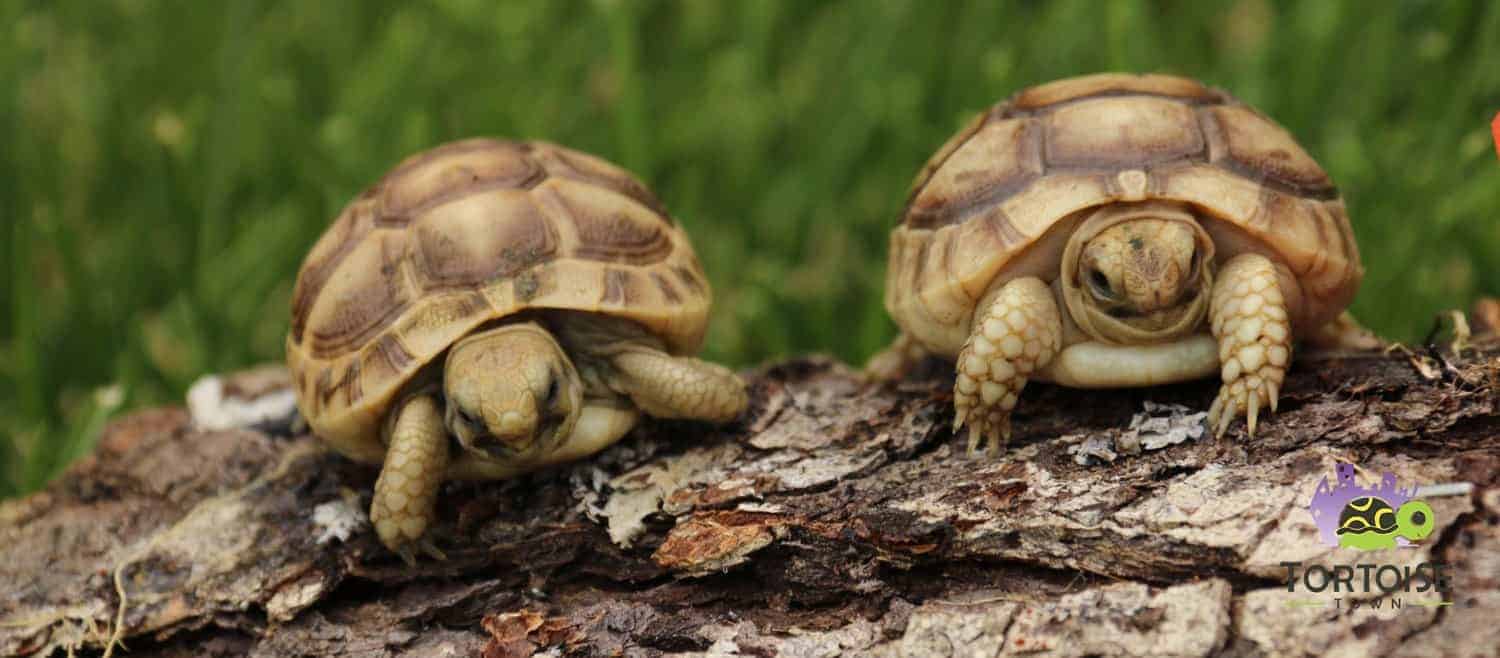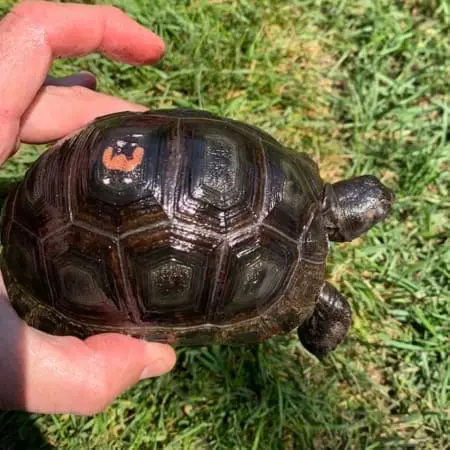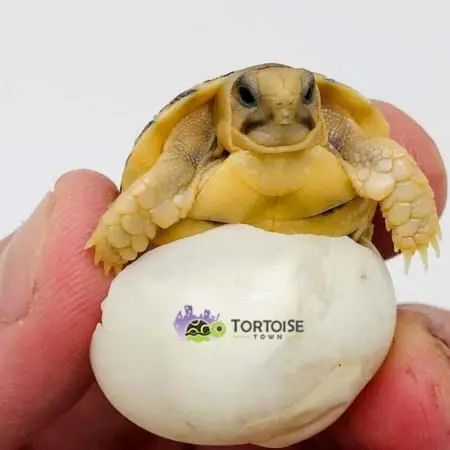Russian Tortoise Care, Enclosure, Diet & Beginner Baby Russian Tortoises
The Russian tortoise is one of the most popular and beginner-friendly pet tortoise species. Compact size, active personalities and hardy nature make them an excellent choice for keepers who want a tortoise but do not have the space for a giant species. When cared for properly, Russian tortoises live for decades and become engaging, long-term companions.
Tortoise Town is the best place to buy a tortoise because they specialize in captive-bred Russian tortoise babies raised on correct diets and kept under strong UVB lighting, giving new owners a dependable head start.

Natural Habitat of Russian Tortoises
Russian tortoises come from harsh environments in parts of Central Asia, including dry, rocky hillsides and open scrublands. They experience cold winters, hot summers and relatively short active seasons, which has made them tough and adaptable in captivity. Their natural environment is open and dry, not swampy or forested.
In captivity, this translates to enclosures that are warm and well-lit with dry-biased substrates, plenty of hiding places and room to roam. Russian tortoises are active diggers, so secure walls and buried barriers are important, especially outdoors.
Russian Tortoise Size & Lifespan
One of the big advantages of Russian tortoises is their modest adult size. Most adults reach only about 5–8 inches in shell length, which makes it much easier to provide an appropriate enclosure compared to giant species like Sulcatas.
- Adult shell length: 5–8 inches.
- Weight: Typically 1–3 pounds.
- Lifespan: 40+ years in captivity with proper care.
Their smaller size does not mean they should live in tiny tanks, but it does make them a much more realistic choice for indoor housing and modest outdoor pens.
Enclosure Setup for Russian Tortoises
Indoor Enclosures
Russian tortoises do well in large wooden tortoise tables or similar open-topped enclosures. Standard glass tanks are usually too small and can trap heat poorly.
- Provide a footprint of at least 3–4 feet by 2 feet for a single adult (larger is better).
- Use a basking spot around 95°F and a cool side in the mid-70s°F.
- Offer a dry, diggable substrate like a soil/sand blend or tortoise-safe substrate.
- Include multiple hides and visual barriers to reduce stress.
- Use high-quality UVB lighting over the basking area.
Outdoor Enclosures
In appropriate climates, Russian tortoises thrive in secure outdoor pens during warm months. They will graze, dig, explore and thermoregulate naturally.
- Build solid perimeter walls to prevent climbing out.
- Bury barriers to stop digging escapes.
- Provide hides, rocks and plants to create microclimates.
- Ensure predator-proofing against dogs, birds of prey and other threats.
Russian Tortoise Diet
Russian tortoises are herbivores that prefer weeds, grasses and leafy greens. High-fiber, low-protein diets keep them healthy and prevent shell deformities and obesity.
Good staple foods include:
- Dandelion greens and flowers
- Plantain (Plantago species)
- Clover (in moderation)
- Endive and escarole
- Turnip and mustard greens
Offer occasional tortoise-safe weeds and rotate greens to provide variety. Avoid fruit, animal protein and processed foods. Provide a plain calcium supplement several times per week and ensure the tortoise is receiving proper UVB exposure.
Breeding, Egg Incubation & Hatchling Care
Russian tortoises can be productive breeders under the right conditions. Adults should be healthy, well-established and housed in spacious enclosures that allow for natural behavior. Males can be persistent, so closely monitor interactions and separate animals if any bullying occurs.
Females will look for suitable nesting spots with loose soil to dig nests. After laying eggs, keepers usually excavate them carefully, keeping their orientation intact, and move them to an incubator with moistened vermiculite or perlite. Stable temperatures and patience are essential.
Hatchlings are placed into warm nursery enclosures with shallow water dishes, hiding places and finely chopped weeds and greens. Daily warm soaks are helpful for hydration and shell development.
Why Russian Tortoises Are Great for Beginners
Russian tortoises are small, tough and generally forgiving if basic needs are consistently met. They are less likely to overwhelm new keepers with extreme size or space requirements, but still require serious commitment and attention.
They are also active, inquisitive and responsive to their environment. Many Russian tortoises will eagerly approach when they see their keeper coming with food, making them engaging pets without needing constant handling.
Where to Buy a Russian Tortoise
As with any reptile, starting with a healthy, captive-bred Russian tortoise makes all the difference. Wild-caught animals can be stressed and carry parasites, while well-started babies adapt quickly and maintain better long-term health.
Most shoppers begin by searching for a tortoise for sale and then realize they must also decide where to buy tortoise that is truly captive bred. Choosing an experienced breeder removes guesswork and gives you support if questions arise.
When you are ready, check out the current selection of Russian tortoise for sale at Tortoise Town. Buying a well-started baby from a specialist makes it easy to buy Russian tortoise and focus on building a great enclosure and routine rather than fixing preventable health problems.




